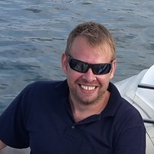Contaminants in Coastal Environments: From the Sediment-Water Interface to the Trophic Chain
A special issue of Applied Sciences (ISSN 2076-3417). This special issue belongs to the section "Environmental Sciences".
Deadline for manuscript submissions: closed (10 December 2021) | Viewed by 13068
Special Issue Editors
Interests: environmental pollution of coastal areas; marine biogeochemistry; mercury; nutrients and trophic state; risk assessment
Special Issues, Collections and Topics in MDPI journals
Interests: biogeochemistry of trace elements in aquatic environments; biogeochemical cycling of mercury; contaminants in coastal environments
Interests: soil; sediments; heavy metals; PAHs; PCBs; organic matter; environmental risk assesment
Special Issues, Collections and Topics in MDPI journals
Special Issue Information
Dear Colleagues,
Rapid industrialization and urbanization have led to the worsening of environmental quality, especially in coastal environments (i.e., estuaries, lagoons, bays, and harbors), which are subjected to several pressures (i.e., industrial, agricultural, and sewage effluents; shipping; oil spills; river nutrient inputs; and atmospheric depositions). In these environments, sediments represent the final sink and the potential secondary sources, for water column and biota, of several contaminants. Thus, potential toxic elements (PTEs), persistent organic pollutants (POPs), and contaminants of emerging concern (CECs) harm marine life, endanger human health, and often lead to expensive mitigation procedures.
This Special Issue of Applied Sciences is a valuable opportunity to publish recent studies related to the contamination of sediments, water, and biota in coastal environments and to assess the bioavailability, fate, and transport of contaminants. Moreover, the risk assessment and management of these sites will be also considered.
Therefore, this Special Issue will cover the following subjects:
- Source, fate, and effect of contaminants in sediments of coastal ecosystems.
- Modeling of sediment source, transport, and storage in coastal ecosystems.
- Geochemical approaches to bottom sediments to assess anthropogenic changes in coastal environments.
- Sediment–water interactions and dynamics in coastal environments affected by anthropogenic modifications.
- Evaluation of the mobility of contaminants from sediments to the water column and biota
- Solutions to prevent and to mitigate the harmful effects of contaminants on aquatic life.
This Special Issue seeks contributions from all around the world and welcomes high-quality papers that examine, at a local or large scale, the effects, interactions, and management of potential contaminants on the marine environment.
Dr. Alessandro Acquavita
Dr. Stefano Covelli
Dr. Efren Garcia-Ordiales
Guest Editors
Manuscript Submission Information
Manuscripts should be submitted online at www.mdpi.com by registering and logging in to this website. Once you are registered, click here to go to the submission form. Manuscripts can be submitted until the deadline. All submissions that pass pre-check are peer-reviewed. Accepted papers will be published continuously in the journal (as soon as accepted) and will be listed together on the special issue website. Research articles, review articles as well as short communications are invited. For planned papers, a title and short abstract (about 100 words) can be sent to the Editorial Office for announcement on this website.
Submitted manuscripts should not have been published previously, nor be under consideration for publication elsewhere (except conference proceedings papers). All manuscripts are thoroughly refereed through a single-blind peer-review process. A guide for authors and other relevant information for submission of manuscripts is available on the Instructions for Authors page. Applied Sciences is an international peer-reviewed open access semimonthly journal published by MDPI.
Please visit the Instructions for Authors page before submitting a manuscript. The Article Processing Charge (APC) for publication in this open access journal is 2400 CHF (Swiss Francs). Submitted papers should be well formatted and use good English. Authors may use MDPI's English editing service prior to publication or during author revisions.
Keywords
- sediment contamination
- contaminants
- coastal environments
- water column
- trophic chain
- risk assessment
- management







